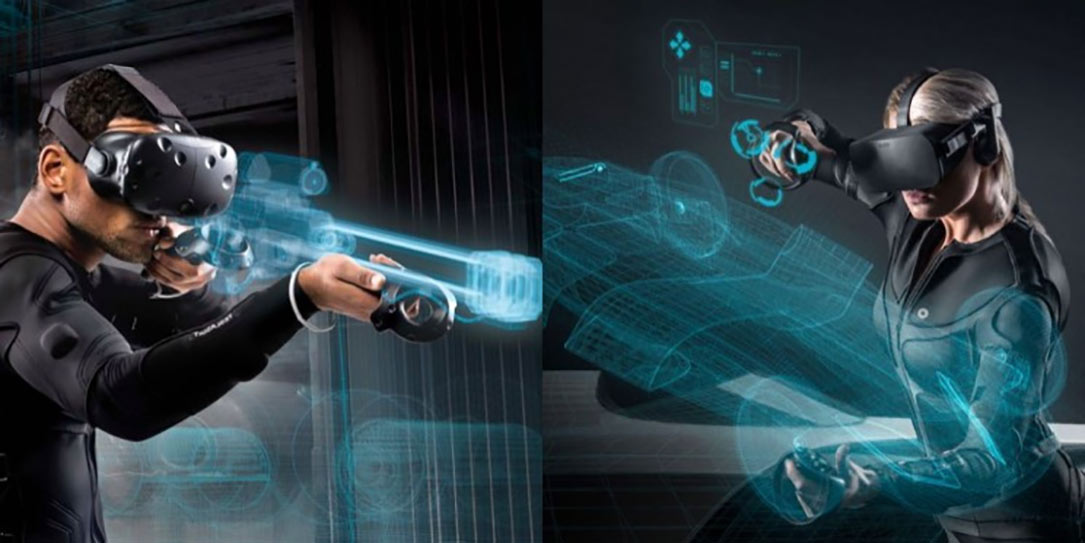Virtual Reality Gaming (VR Gaming) is revolutionizing the way we experience interactive entertainment. By immersing players in a three-dimensional environment, VR technology allows gamers to engage with their favorite titles like never before. With the use of advanced headsets and motion tracking, players can explore fantastical worlds, solve intricate puzzles, and engage in thrilling combat, all from the comfort of their own homes. As the gaming industry continues to evolve, the integration of virtual reality is becoming increasingly prominent, making it a hot topic among enthusiasts and developers alike.
In this article, we will delve deeper into the fascinating realm of Virtual Reality Gaming. You will learn about the latest advancements in VR technology, including the most popular headsets on the market and the games that are pushing the boundaries of what is possible. Additionally, we will explore the benefits of VR gaming, such as enhanced immersion and social interaction, as well as the challenges that developers face in creating compelling experiences. Whether you are a seasoned gamer or new to the world of virtual reality, there is something for everyone in this exciting landscape.
So, if you’re ready to embark on a journey that will change the way you play, keep reading! Discover how Virtual Reality Gaming is not just a trend, but a transformative experience that is shaping the future of entertainment. Join us as we uncover the potential of VR and what it means for gamers around the globe.
The Evolution of Virtual Reality Gaming
The journey of virtual reality (VR) gaming has been remarkable, evolving from rudimentary simulations to immersive experiences that captivate players. Early attempts at VR can be traced back to the 1960s with devices like the Sensorama, which offered a multi-sensory experience. However, it wasn’t until the 1990s that VR gaming began to gain traction with systems like the Sega VR and Nintendo’s Virtual Boy, albeit with limited success due to technological constraints.
Today, advancements in technology have led to the development of sophisticated VR headsets such as the Oculus Rift, HTC Vive, and PlayStation VR. These devices utilize high-resolution displays, motion tracking, and spatial audio to create a sense of presence that was previously unattainable. As a result, VR gaming has transformed into a mainstream entertainment medium, attracting a diverse audience and fostering a vibrant gaming community.
Key Technologies Behind VR Gaming
Several key technologies contribute to the immersive experience of virtual reality gaming. Motion tracking is essential, allowing players to interact with the virtual environment through their movements. This is achieved using sensors and cameras that detect the player’s position and orientation, translating real-world actions into the virtual space.
Another critical component is haptic feedback, which enhances immersion by providing tactile sensations. Controllers equipped with vibration motors simulate the feeling of touch, making interactions feel more realistic. Additionally, advancements in graphics rendering and processing power have enabled developers to create stunning visuals that further enhance the gaming experience.
Popular VR Gaming Platforms
Several platforms dominate the VR gaming landscape, each offering unique experiences and game libraries. Oculus, owned by Meta, provides a range of headsets, including the Oculus Quest, which is known for its standalone capabilities and wireless freedom. SteamVR, on the other hand, supports a variety of headsets and boasts a vast library of VR titles, catering to both casual and hardcore gamers.
PlayStation VR has also made a significant impact, especially among console gamers, with exclusive titles that leverage the PlayStation ecosystem. Each platform has its strengths, and the choice often depends on the player’s preferences, budget, and desired gaming experience.
The Impact of VR on Game Design
Virtual reality has fundamentally changed the way games are designed. Developers must consider the player’s physical movements and spatial awareness, leading to innovative gameplay mechanics that are not possible in traditional gaming. This shift has resulted in the creation of unique genres, such as VR puzzle games and immersive storytelling experiences that draw players into the narrative.
Moreover, the design of user interfaces in VR games has evolved to prioritize intuitive interactions. Instead of relying on traditional menus, players can now navigate through virtual environments using gestures and voice commands, creating a more seamless and engaging experience.
Social Interaction in VR Gaming
One of the most exciting aspects of virtual reality gaming is the potential for social interaction. Many VR games incorporate multiplayer features, allowing players to connect and collaborate in shared virtual spaces. This social dimension enhances the gaming experience, fostering a sense of community and camaraderie among players.
Platforms like VRChat and Rec Room have gained popularity for their social environments, where users can create avatars, participate in games, and engage in conversations. These interactions can lead to lasting friendships and a vibrant online community, showcasing the power of VR to bring people together.
The Future of VR Gaming
The future of virtual reality gaming is promising, with ongoing advancements in technology and increasing investment from major companies. As hardware becomes more affordable and accessible, a broader audience is expected to embrace VR gaming. Additionally, the integration of artificial intelligence and machine learning could lead to more personalized and adaptive gaming experiences.
Furthermore, the potential for VR in other fields, such as education and training, may also influence the gaming industry. As developers explore new applications for VR technology, we can anticipate innovative gameplay experiences that push the boundaries of traditional gaming.
Challenges Facing VR Gaming
Despite its growth, virtual reality gaming faces several challenges. One significant hurdle is the issue of motion sickness, which can occur when there is a disconnect between visual input and physical movement. Developers are actively working on solutions to minimize this discomfort, but it remains a concern for many players.
Additionally, the cost of high-quality VR equipment can be prohibitive for some consumers. While prices have decreased over time, the initial investment for a complete VR setup can still be a barrier to entry. Addressing these challenges will be crucial for the continued expansion of the VR gaming market.
The Role of VR in Esports
As esports continues to grow in popularity, virtual reality is beginning to carve out its niche within this competitive landscape. VR esports offers a unique twist on traditional competitive gaming, with players engaging in immersive environments that require both skill and strategy. Titles like Echo Arena and VR League have showcased the potential for VR in competitive settings, attracting dedicated player bases and audiences.
The integration of VR into esports also presents opportunities for new formats and experiences, such as live events where spectators can experience the action from a first-person perspective. As the technology matures, we can expect to see more VR esports tournaments and a greater emphasis on competitive VR gaming.
| Aspect | Description |
|---|---|
| Definition | Virtual Reality (VR) gaming refers to the use of computer technology to create a simulated environment that can be interacted with in a seemingly real way. |
| Technology | VR gaming typically involves the use of VR headsets, motion controllers, and sometimes additional equipment like gloves or treadmills to enhance immersion. |
| Types of VR Games | VR games can range from action and adventure to simulation and puzzle games, catering to various interests and age groups. |
| Benefits | VR gaming offers immersive experiences, improved hand-eye coordination, and can even be used for therapeutic purposes, such as exposure therapy. |
| Challenges | Challenges include motion sickness, the need for powerful hardware, and the potential for social isolation among users. |
| Future Trends | The future of VR gaming includes advancements in technology, increased accessibility, and the integration of social features for multiplayer experiences. |



